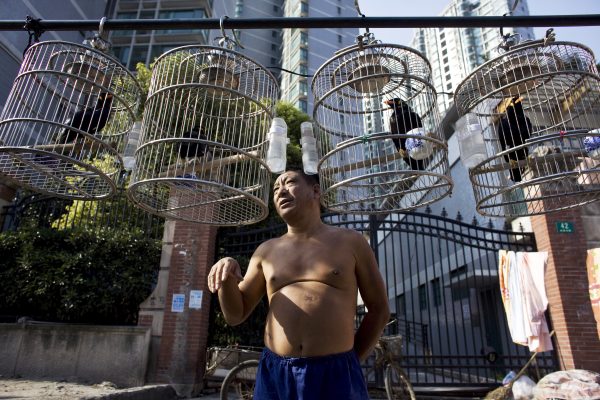The Xi Jinping–Wang Qishan administration is now in the position many feared a Bo Xilai–Zhou Yongkang presidency would be: tightening central control over economic policy. 2016 has signalled a winding back of the market liberalisation agenda of Zhou Xiaochuan — Governor of the People’s Bank of China — and former finance minister Lou Jiwei and the rise of a new era of ‘bird in the cage’ policy narrative.
When the People’s Bank of China devalued the renminbi (RMB) in 2015, the world flinched at the power of Zhou Xiaochuan. But in February 2016, the political gravity swung back to Liu He’s Economic and Financial Affairs Leading Group, a core Party policy institution.
Liu He headed the counter-attack on Zhou by calling for a tightening of the money supply in a pivotal February 2016 document. The following period between the 5th and 6th Plenums truly belonged to Liu and the mantle of Chen Yun he has appropriated.
The cacophony of opposition from the market-liberal camp that followed was muffled under the sway of ‘collective leadership’. Whatever the Party politics of 2017, Zhou’s eventual retirement will mean a different guiding ideology for the central bank. While on 7 November 2016, Xiao Jie finally replaced Lou Jiwei as finance minister — a decision conveniently overshadowed by the US election the following day.
The lurch back towards industrial policy and the emergence of a parallel trade regime through Eurasia is the price of the market-liberals failure to connect the RMB to the global financial architecture. Expect tighter core Party control in 2017 over China’s monetary and fiscal policy.
China’s trade agenda is taking advantage of its geography. Securing trade routes through former Soviet countries to China’s west. This ‘New Great Game’ in Central Asia is allowing China to outflank ocean-trading institutions as global shipping collapses under the weight of overcapacity in shipbuilding and weak Chinese industrial output.
China will continue to develop ocean-based trade infrastructure with its partners across the Pacific through the Regional Comprehensive Economic Partnership. But China’s trade and investment agenda across the new Eurasian Economic Union — as well as the Common Market for Eastern and Southern Africa and Mercosur — will likely bypass many of the traditional trade powers. And its capital investment will mostly be unaudited state mercantile debt.
China’s international capacity cooperation funds mushroomed in 2016. This also shows the extent of local government debt being exported to unwitting economic partners as asset price-inflated government finance is transferred to Belt and Road economies.
Financial repression — where bank deposits earn returns below inflation — and demand constraints in China have combined to create both a secondary form of taxation and a ‘riskless’ investment architecture. This iron deposit bowl of the state-owned commercial bank model in China is coupled with a system of captured bond buyers, where state banks purchase the debt they raise in a closed ‘risk-free’ loop.
But real debt deflation risks are being devolved into obscurity to local governments. The implicit and explicit institutional guarantee that policy banks, the central bank, the Ministry of Finance and state-owned commercial banks do not carry endogenous risks of debt deflation is largely psychological.
Rather than face audits, China’s answer has been to bury government liquid capital debt even further down the administrative hierarchy and to export the fixed capital production capacity in a parallel trade and investment policy branded ‘international capacity cooperation’.
Political risk in the Asia Pacific will be increasingly determined not on the prosperity of greater ocean trade alliances but the risks of regional financial contagion. Against the retreat of the United States’ Pacific and Atlantic trade pacts, China’s pushing of debt offshore to Africa, Latin America and Central Asia risks creating a parallel trade and investment architecture.
Looking past the 19th Party Congress to the 20th Party Congress, consider the economic infrastructure that the ascendant sixth generation of leadership will inherit in the 2020s. Short-term policy changes in 2017 China will have lasting consequences for the greater Asia Pacific long-term economic forecast.
Tristan Kenderdine is Research Director at Future Risk and lecturer in Public Administration at Dalian Maritime University.


Very thought provoking .